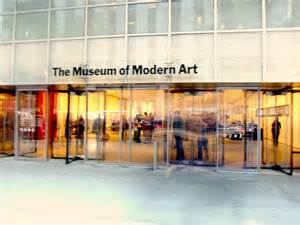Oct 7 2018 - Jan 13 2019
New York City, NY
Charles White (1918–1979) powerfully interpreted African American history, culture, and lives over the course of his four-decade career. A superbly gifted draftsman and printmaker as well as a talented mural and easel painter, White portrayed the truth, beauty, and dignity of life and people through an accessible realism. His works focus on the struggle for equality and self-possession and the heroic actions of African Americans, while expressing the universality of the human spirit. This exhibition—the first major retrospective of White’s work in more than 35 years—showcases a gifted and influential artist whose work continues to resonate amid today’s national dialogues about race, work, equality, and history.
Born in Chicago and educated at the School of the Art Institute, White was part of the city’s flourishing black artistic community of the 1930s. He was determined to employ art in the struggle for social change, declaring, “Paint is the only weapon I have with which to fight what I resent.” Influenced by Mexican muralists such as Diego Rivera, White completed several important mural commissions in the city, including one for a branch of the Chicago Public Library.
White married sculptor Elizabeth Catlett in 1941, and the couple soon settled in New York. Together they traveled to Mexico City, where White honed his printmaking skills as part of the printmaking collective known as the Taller de Gráfica Popular. In New York in the 1940s and early 1950s, White showed his work at the progressive ACA Gallery and was a prominent member of African American and leftist artist communities. White moved to Southern California in 1956, and his career flourished as he embraced drawing and printmaking more fully, pushing at the boundaries of his media while continuing to engage with civil rights and equality. Despite his rejection of the prevailing style of Abstract Expressionism and ongoing use of an expressive figuration, he found critical acclaim in the United States and abroad.
Charles White: A Retrospective unites a selection of White’s finest paintings, drawings, and prints, presenting the full breadth of his work and demonstrating his artistic development—from the 1930s through his premature death in 1979. The themes he explored—African American history and the fight for freedom, the nobility of black people, and the dignity of labor and human nature—reveal his talent and passion, and encourage viewers to consider current questions of history, politics, and identity in relation to the recent past.
“Art must be an integral part of the struggle,” Charles White insisted. “It can’t simply mirror what’s taking place. … It must ally itself with the forces of liberation.” Over the course of his four-decade career, White’s commitment to creating powerful images of African Americans—what his gallerist and, later, White himself described as “images of dignity”—was unwavering.
Credit: Exhibition overview from museum website.
Image: Charles White. “Our Land,” 1951. Private Collection (© The Charles White Archives)
Whether or not you go, the exhibition catalog, Charles White: A Retrospective, provides a much-needed reexamination of the artist’s career and legacy. With handsome reproductions of White’s finest paintings, drawings, and prints, the volume introduces his work to contemporary audiences, reclaims his place in the art-historical narrative, and stresses the continuing relevance of his insistent dedication to producing positive social change through art. Best known for bold, large-scale paintings and drawings of African Americans, White executed meticulous works that depict human relationships and socioeconomic struggles with a remarkable sensitivity. Tracing White’s career from his emergence in Chicago to his mature practice as an artist, activist, and educator in New York and Los Angeles, leading experts provide insights into White’s creative process, his work as a photographer, his political activism and interest in history, the relationship between his art and his teaching, and the importance of feminism in his work. A preface by Kerry James Marshall addresses White’s significance as a mentor to an entire generation of practitioners and underlines the importance of this largely overlooked artist.
Select Charles White: A Retrospective to learn more, or to place this book in your Amazon shopping cart. Your Amazon purchase through this link generates a small commission that will help to fund the ArtGeek.art search engine.


